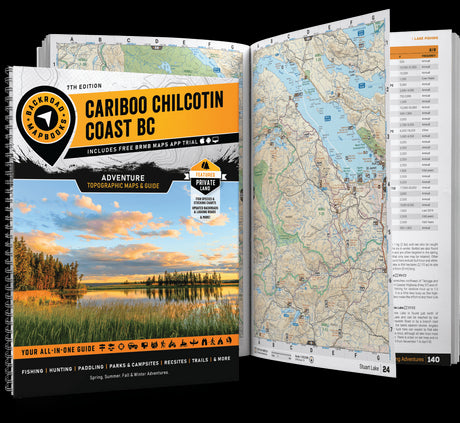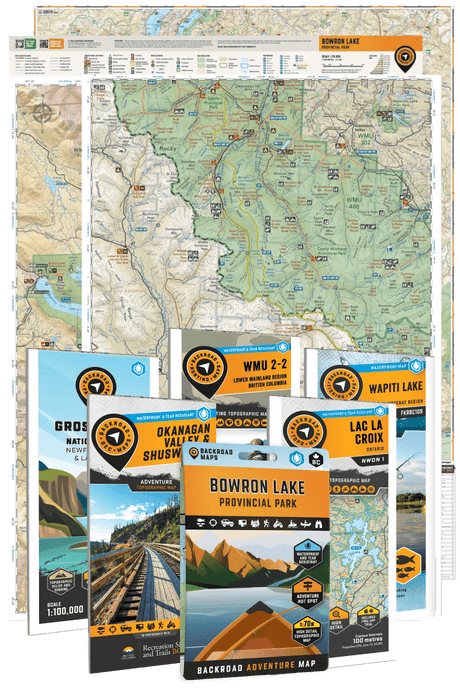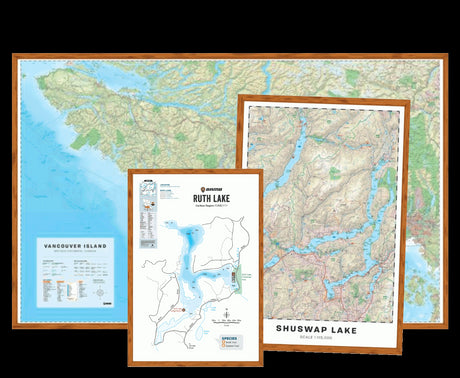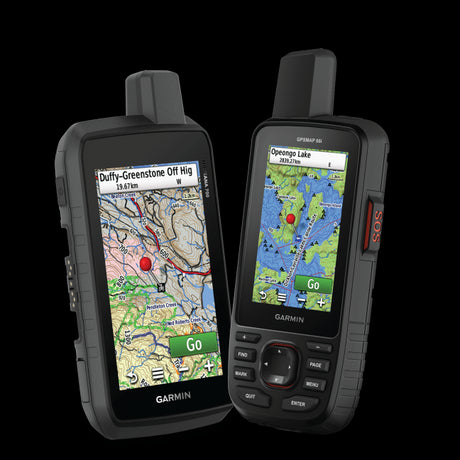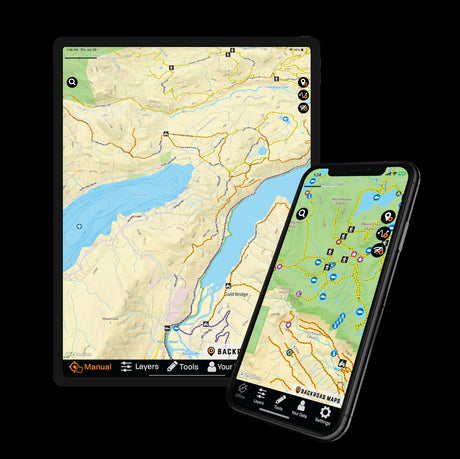Manitoba offers an abundance of wildlife viewing opportunities due to its dramatic mosaic of different habitats. The landscape varies from sand dunes in the south to rugged Canadian Shield through its middle and arctic tundra to the north. This diverse geography creates homes for countless wild animals, from rare lizards and snakes to classic Canadian species such as black bears, moose, and even bison and polar bears! Grab your binoculars, scope, or camera and check out some great destinations described below, ideally in the early morning or late evening for best results.
Great Blue Heron at Basket Lake Wildlife Management Area
This area protects 7,260 hectares of wetlands and grassy uplands. Basket Lake is a shallow and marshy water body hosting various waterfowl, including great blue heron, ring-billed gull and several grebe species. In the forest and grassland areas, you may find black bear, elk, gray wolves, moose, white-tailed deer and grouse. There are also amphibians, including various frog species and garter snakes. The Wildlife Management Area sits 6.4 km west of Homebrook, north of Provincial Road 328.
Moose and Elk at Bell and Steeprock Canyons Protected Area
Home to several river canyons carved by glacial meltwater and forest interspersed with wetlands, this reserve is found approximately 75 km north of Swan River. The protected area offers breeding, moulting and staging areas for numerous migratory birds, particularly Canada geese and sandhill cranes. Moose, elk and white-tailed deer can be found here in high numbers, along with a large population of off-colour black bears.
Sandhill Cranes at Big Grass Marsh Game Bird Refuge
This refuge encompasses 5,000 hectares (12,355 acres) of marsh and grassland. As the most important flyway stop for sandhill cranes in Manitoba, the autumn months can see up to 6,500 birds. The marsh is also home to one of the largest nesting populations of Franklin’s gulls in Canada, and it provides an important mounting and staging area for waterfowl like Canada geese, mallard ducks and snow geese. Over 10,000 mallards have been counted in the fall. Visitors will find grassland birds like Le Conte’s and Baird’s sparrows and upland sandpipers nesting here. Highway 265, a gravel road accessed from Langruth or Plumas, runs through the middle of the park.
Polar Bears at Churchill Wildlife Management Area
Manitoba’s largest Wildlife Management Area at nearly 850,000 hectares (2,100,395 acres), this WMA and the adjacent Wapusk National Park protect the largest known polar bear maternity denning grounds in the world. Canada is home to approximately 16,000 of the 20,000-25,000 polar bears in global polar regions, with Chuchill known as the “Polar Bear Capital of the World”. The best time to spot the bears is in the fall as they congregate on the coast waiting for the ice to freeze, and most do so with the help of guided tours. International Polar Bear Day around the world is February 27th, a great time to be in Churchill.

The Cape Churchill caribou herd, with an estimated population of over 3,000, also moves through the Churchill WMA on well-established routes from the forest's winter cover to the open tundra and coastal flats in summer. Other wildlife includes arctic hare, arctic fox, willow ptarmigan, snowy owl and snow geese, which can appear in the thousands.
In the summer, the area is a birder’s paradise with over 225 recorded species. In June, sea birds like common eider, long-tailed duck and Pacific and red-throated loon appear on the open water of Hudson Bay. Other common birds include gull, godwit, gyrfalcon, Hudsonian godwit, merlin, northern shrike and tundra swan. In July and August, thousands of beluga whales move into the Churchill, Nelson and Hayes estuaries to feed.
Bald Eagles at David G. Tomasson Wildlife Management Area
Situated inland from Washow Bay, this 1,425 hectare (3,520 acre) Wildlife Management Area provides a habitat for moose and a staging area for waterfowl and bald eagles. Bald eagles are best viewed during migration in October, while great blue herons have a rookery in the area and can also often be spotted.
One of the Largest Wetlands in North America, Delta Marsh Wildlife Management Area
At 22,000 hectares (54,365 acres), this is one of the largest wetlands in North America. The Delta Marsh Bird Observatory, at the south end of Lake Manitoba (24 km north of Portage la Prairie), has been operating since 1992. The wildlife refuge contains ridge and deciduous forests providing a natural corridor for migrating birds. Species found here include American redstart, American white pelican, canvasback, least flycatcher, northern waterthrush, Ross’s goose, snow goose, song sparrow, Tennessee warbler, western and Clark’s grebes, white-throated sparrow, yellow-headed blackbird and yellow warbler. With easy access and plenty of birds to see, check out the Delta Beach or St. Ambroise Provincial Park areas.
White-Tailed Deer at Grahamdale Wildlife Management Area
Part of the Interlake region, this Wildlife Management Area is close to Lake Manitoba's northern end, east of Provincial Highway 6. Made up of ridges 400 to 800 metres wide created by the retreating glacial Lake Agassiz, the area is covered by a mix of forest, grassy meadows, shallow marshes and rock outcrops. Elk can often be seen grazing in the meadows, and the area is also home to beaver, black bear, coyote, moose, snowshoe hare and white-tailed deer. Red-sided garter snakes find this to be a hospitable environment as well.
Woodland Caribou at Grass River Provincial Park
Grass River plays a historical role as one of the main routes used by fur traders as they navigated Manitoba. With an area of 227,900 hectares (563,153 acres), the park is home to a thriving population of woodland caribou, as well as bear, deer, moose, wolf and wolverine. Bird enthusiasts will find bald eagles, great gray owls, double-crested cormorants, great blue herons, gulls, terns and white pelicans. The area is also notable for its angling opportunities, with waters teeming with fish. The park lies north of The Pas; travel 74 km along Highway 10, turn right, then follow Highway 39.
Wolves at Hecla/Grindstone Provincial Park
This park provides habitats for many species, including black bears, great gray owls, moose, northern hawk-owls, wolves, and woodpeckers. On the north tip of Hecla Island, a picnic area with interpretive signs overlooks smaller nesting islands where American white pelicans, Caspian terns, cormorants and gulls make their home. For more wildlife viewing, check out the Grassy Narrows Marsh at the south end of the park, with walking trails and a viewing tower revealing American bittern, common yellowthroat, great gray owl, grebes, pileated woodpecker and sandhill crane. Try the causeway or lighthouse spit at Gull Harbour during early spring to spot red-breasted mergansers. In October, bald eagles also migrate through the park in large numbers.
White Pelicans at Kaweenakumik Lake Important Bird Area
The 13,700 hectare (33,853 acre) Important Bird Area comprises Kaweenakumik Lake and surrounding areas. It was created as part of the Protected Areas Initiative. Bird enthusiasts will find up to 6,000 nesting pairs of American white pelicans – about 5% of the global population. Other species include gulls, terns, cormorants, grebes, and herons. During fall migration, visitors will spot several swans, geese, and diving ducks. Additionally, the islands of the lake are important calving sites for caribou.

Bats at Lake St. George Caves Ecological Reserve
A great destination for those into bats, this reserve found 90 km northwest of the Peguis First Nation features eight limestone caves, including the largest known bat hibernaculum in the province. Species of bats found here include hoary bats, keen’s bats and little brown bats, with the largest cave providing habitat for an estimated 5,000 to 10,000 of these little fellows. The caves themselves are also well worth a look. Featuring Ordovician Limestone, there are many unique geological features including calcite crystals, geodes, goethite, “flowstone drapery” and “soda straws.
Badgers, Bear and Deer at Manitoba Tall Grass Prairie Preserve
This preserve protects the country’s largest remaining area of tall grass prairie, an ecosystem that once blanketed the interior of the continent from here to Texas. The preserve is home to more than 150 species of birds, including Baird’s sparrow, black-billed cuckoo, bobolink, sandhill crane, sharp-tailed grouse, upland sandpiper and many others. You can also see a variety of amphibians, including blue-spotted salamanders, as well as countless butterflies. Badgers, bears, white-tailed deer and white-tailed jackrabbits call this place home as well. Two interpretive trails guide you through the preserve - the 1.6 km Agassiz Interpretive Trail and the 1.5 km Prairie Shore Trail. To reach the preserve from Winnipeg, take Highway 59 south to Provincial Road 201 or 209 and head east.
A Birders Paradise at Mars Hill Wildlife Management Area
Found 8 km east of Libau, adjacent to the Libau Bog Ecological Reserve off Provincial Road 317, this Wildlife Management Area is considered one of the top birding sites in Manitoba. Comprised of aspen, jack pine and white spruce forest as well as bog and grassland, it is an important winter habitat for deer, along with the occasional moose and bear. Ruffed grouse, sharp-tailed grouse, spruce grouse, a variety of raptors and numerous non-game birds breed and migrate through the area.

Red-Sided Garter Snakes at Narcisse Wildlife Management Area
Twice a year, the Narcisse Wildlife Management Area is home to more snakes than you can see anywhere else in the world. The red-sided garter snakes come from over 20 km (12.5 mi) away to begin their mating ritual, spending two to three weeks in the area before dispersing into marshes for the summer. They reappear again in the fall as they head into the fissures and crevasses of the limestone bedrock for the winter. The best times to visit are in late April into the first three weeks of May or early September. There is a 3 km walking trail from which you can observe the four active snake dens. Manitoba Conservation maintains an activity-level webpage.
Caribou, Beluga Whales and Timber Wolves at Nelson River Estuary
About 150 km downstream from Gillam, this rarely visited estuary encompasses the area where the Nelson River empties into western Hudson Bay. It consists of fine sand and gravel deposits, grasses, willows, bogs and smatterings of Black Spruce. The varied ecosystems create habitats for many species including significant populations of beluga whales, caribou, polar bears and timber wolves. This is an important stopover along the Mississippi Flyway for American black ducks, as well as bald eagles, black scoters, and various other shorebirds like gulls and sandpipers.
Wildlife Viewing Tours at Pembina Valley Provincial Park
This park preserves areas of the Pembina/Tiger Hills Natural Region. Visitors can explore via hiking trails ranging in difficulty. The Pembina Rim trail has a wildlife viewing tour featuring species like American redstarts, golden eagles, ground squirrels, indigo bunting, red-tailed hawks, snowshoe hares and Swainson’s hawks. You may also spot red fox or white-tailed deer, and hear birdsong trailing from chickadees, vireos and warblers. The park sits off Provincial Road 201, south of Morden. There is a large sign at the entrance.
Bison at Riding Mountain National Park
Riding Mountain National Park provides opportunities to view a variety of wildlife, flora and fauna. It hosts 728 plant species, 250 bird species and 61 mammal species. The park’s native elk subspecies are among the largest in North America – adult bulls can reach 400 kg (880 lbs). Other mammals include black bears, moose, wolves and a captive bison herd, which can be observed from your vehicle as you drive through their enclosure. You will find 14 at-risk species, including the trumpeter swan, a bird that returned to nest here in 2003 following near-extinction. Other notable bird species include great gray owls and warblers. The park sits north of Wasagaming, with Highway 10 running straight through it.
Coyote and Elk at Spruce Woods Provincial Park
Spruce Woods Provincial Park features upland forest, spruce parkland, mixed-grass prairie, river bottom forest and the breathtaking dunes known as Spirit Sands. There are few other places in Canada where you can find such large stretches of open sand. With this range of habitats, the park supports a variety of animals. You may spot coyotes, deer, elk and many bird species, including grouse, indigo bunting, mountain eastern bluebird and western meadowlark. Most notable are the northern prairie skink and western hognose snakes, which are unique to the park. To reach the park, take Highway 1 west from Winnipeg and turn south on Highway 5 for 29 km. Take Highway 2 west, and then turn north along Highway 5 for 13 km.
Owls at Spur Woods Wildlife Management Area
This Wildlife Management Area in southeastern Manitoba at the US border encompasses 731 hectares (1,805 acres) of old-growth red pine and eastern white cedar stands. Designated to protect this rich habitat, the WMA is a major breeding and migration area for great gray, northern saw-whet and boreal owls. Wildlife enthusiasts may find black bears, coyotes, fishers, lynx, moose, snowshoe hares, white-tailed deer and wolves in the area. Explore the numerous access trails that are open year-round. One of these trails follows the old railway spur line. Look for the WMA 6 km west of Piney on Provincial Road 201.
Have we whet your appetite check out the diverse wildlife of Manitoba? What we’ve shared with you is only a small sampling of the many great destinations to view wildlife in this province. If you are ready to explore some of these areas, pick up a copy of our new 4th Edition of the Manitoba Backroad Mapbook or our BRMBmaps app, available for both IOS and Android.
World Wildlife Day is March 3rd, a perfect day to get out and observe wildlife in their nature surroundings. And when you are out exploring, be sure to share your adventures on brmbmaps.com or social with #BRMBLIFE.
















